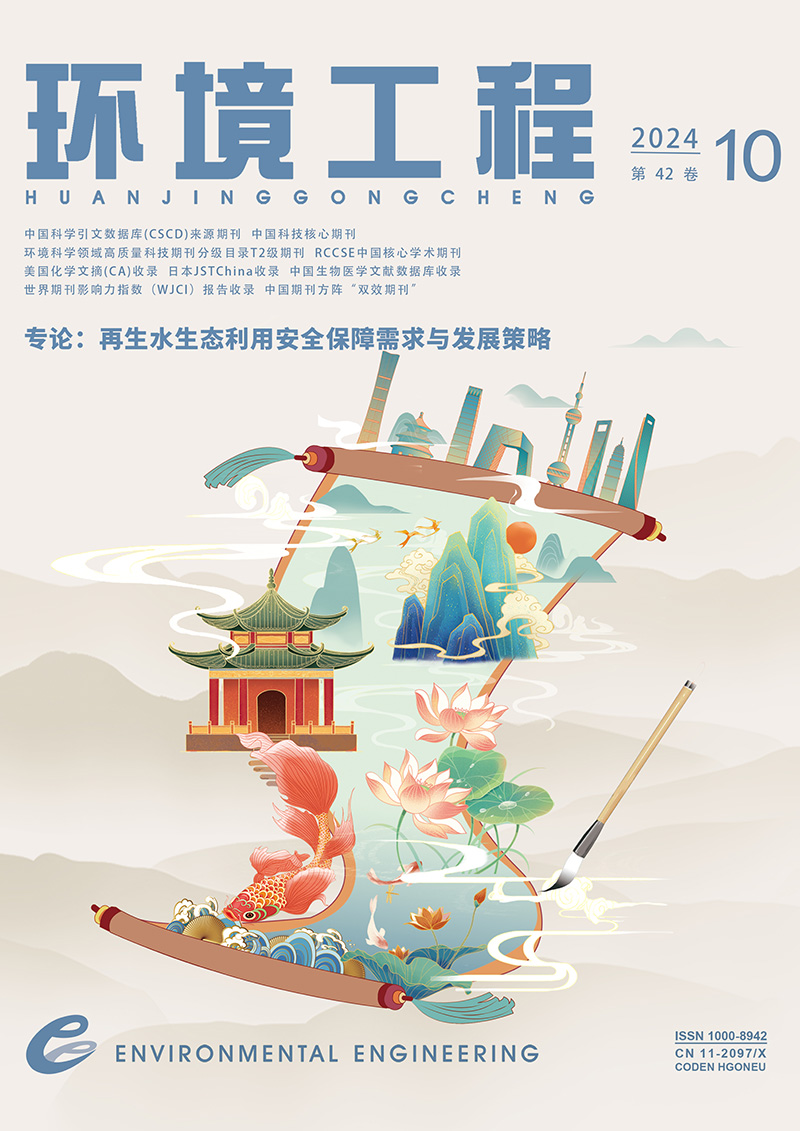| [1] |
生态环境部. 2022年中国生态环境状况公报.https://www.mee.gov.cn/hjzl/sthjzk/zghjzkgb/202305/P020230529570623593284.pdf.https://www.mee.gov.cn/.
|
| [2] |
肖致美,李源,孔君,等. 天津市PM2.5-O3复合污染特征及气象影响分析[J]. 环境科学,2022,43(6):2928-2936.
|
| [3] |
WANG Y Y, HU J L, ZHU J, et al. Health Burden and economic impacts attributed to PM2.5 and O3 in China from 2010 to 2050 under different representative concentration pathway scenarios[J]. Resour Conserv Recycl, 2021, 173: 105731.
|
| [4] |
冯凝,唐梦雪,李孟林,等.深圳市城区VOCs对PM2.5和O3耦合生成影响研究[J].中国环境科学,2021,41(1):11-17.
|
| [5] |
XING J,WANG J D,MATHUR R,et al. Impacts of aerosol direct effects on tropospheric ozone through changes in atmospheric dynamics and photolysis rates[J]. Atmospheric Chemistry and Physics,2017,17(16): 9869-9883.
|
| [6] |
戴海夏,安静宇,黄成,等. 长江三角洲区域大气PM2.5和臭氧污染协同控制路径[J]. 科学通报,2022,67(18):2100-2112.
|
| [7] |
BAO R, ZHANG A C. Does lockdown reduce air pollution Evidence from 44 cities in northern China[J]. Total Environ, 2020, 731, 139052.
|
| [8] |
PEI Z M, CHEN X W, LI X D, et al. Impact of macroeconomic factors on ozone precursor emissions in China[J]. Clean Prod, 2022, 344:130974.
|
| [9] |
HUANG X, DING A J, GAO J, et al. Enhanced secondary pollution offset reduction of primary emissions during COVID-19 lockdown in China[J]. National Science Review, 2021, 8(2):51-59.
|
| [10] |
ZHENG H, KONG S, CHEN N, et al. Significant changes in the chemical compositions and sources of PM2.5 in Wuhan since the city lockdown as COVID-19[J]. Science of the Total Environment, 2020,739:141234.
|
| [11] |
LI L, LI Q, HUANG L, et al. Air quality changes during the COVID-19 lockdown over the Yangtze River Delta Region: an insight into the impact of human activity pattern changes on air pollution variation[J]. Science of the Total Environment, 2020,55(7821):139282.
|
| [12] |
ANNELA A, OLIVIER D, FENGMING X, et al. China’s air pollution reduction efforts may result in an increase in surface ozone levels in highly polluted areas[J]. Ambio, 2016,45(2):1-12.
|
| [13] |
祁宏,张小玲,康平,等. COVID-19疫情期间成都市地面臭氧污染特征及气象成因分析[J]. 环境科学学报,2021,41(10):4200-4211.
|
| [14] |
PIERRE S, PAOLA C, ALESSANDRA D M, rt al. High spatial resolution WRF-Chem model over Asia: physics and chemistry evaluation[J]. Atmospheric Environment, 2021,244:118004.
|
| [15] |
张宸赫,王东东,赵天良,等. 基于WRF-Chem和EMI指数的新冠肺炎疫情期间沈阳市大气污染物浓度变化原因分析[J]. 环境科学学报, 2021,41(9):3709-3716.
|
| [16] |
常炉予,许建明,周广强,等. 上海典型持续性PM2.5重度污染的数值模拟[J]. 环境科学, 2016,37(3):825-833.
|
| [17] |
李玉婷,谭贵蓉,何兴潼,等. 基于HYSPLIT模式的泸州特大暴雨水汽输送特征分析[J]. 高原山地气象研究, 2020,40(2):49-52.
|
| [18] |
许君利,韩海东,王建. 新疆大气PM2.5来源与潜在贡献源分析[J]. 干旱区研究, 2023,40(6):874-884.
|
| [19] |
徐红,陈军庆,何斗太,等. 1980—2015年沈阳地区采暖期霾天气气候特征[J]. 气象与环境学报, 2017,33(2):87-94.
|
| [20] |
王闯,王帅,杨碧波,等. 气象条件对沈阳市环境空气臭氧浓度影响研究[J]. 中国环境监测, 2015,31(3):32-37.
|
| [21] |
刘咸德,李军,赵越,等. 北京地区大气颗粒物污染的风向因素研究[J]. 中国环境科学, 2010,30(1):1-6.
|
| [22] |
李正,张昊,叶辉,等. 杭州市典型雾霾期污染特征及污染源的HYSPLIT模型分析[J].环境科学学报,2018,38(5):1717-1726.
|
| [23] |
张芊,庞可,马彩云,等. 甘肃地区春冬季颗粒物输送路径及潜在源分析:基于HYSPLIT4模式及TraPSA分析平台[J]. 中国环境科学,2022,42(2):509-518.
|
| [24] |
LIU T, WANG X Y, HU J L, et al. Driving forces of changes in air quality during the COVID-19 lockdown period in the Yangtze River Delta region[J]. Environmental Science & Technology Letters, 2020, 7:779-786.
|
| [25] |
周磊,武建军,贾瑞静,等. 京津冀PM2.5时空分布特征及其污染风险因素[J]. 环境科学研究,2016,29(4):483-493.
|
| [26] |
潘本锋,程麟钧,王建国,等. 京津冀地区臭氧污染特征与来源分析[J]. 中国环境监测,2016,32(5):17-23.
|
| [27] |
黄亮. 我国臭氧污染特征及现状分析[J]. 环境保护与循环经济,2014,34(5):64-66.
|
| [28] |
LI N, HE Q Y, JIM G, et al. Impacts of biogenic and anthropogenic emissions on summertime ozone formation in the Guanzhong Basin[J]. Atmospheric Chemistry and Physics, 2018, 18: 7489-7507.
|
| [29] |
刘闽,王闯,侯乐,等. 沈阳臭氧污染时空分布特征及变化趋势[J]. 中国环境监测, 2017, 33(4):126-131.
|
| [30] |
玛依拉·热西丁,丁建丽,张喆,等. 乌鲁木齐市气溶胶光学厚度时空分布特征及潜在来源分析[J]. 环境科学学报,2020,40(5):1611-1620.
|
| [31] |
YIN Z C, WANG H J. Role of atmospheric circulations in haze pollution in December 2016[J]. Atmospheric Chemistry and Physics, 2017, 17(18): 11673-11681.
|
| [32] |
WANG J, HAN J T, LI T N, et al. Impact analysis of meteorological variables on PM2.5 pollution in the most polluted cities in China[J]. Heliyon, 2023, 9(7): e17609.
|
| [33] |
高木木,孙学斌,陈杨. 气象因素对沈阳臭氧浓度的影响研究[J]. 绿色科技,2022,24(22):171-174
, 180.
|
| [34] |
GUO H, LING Z H, CHENG H R, et al. Tropospheric volatile organic compounds in China[J]. Science of the Total Environment, 2017, 574:1021-1043.
|
| [35] |
CHEN S P, CHANG C C, LIU J J, et al. Recent improvement in air quality is evidenced by the island-wide monitoring network in Taiwan[J]. Atmos Environ, 2014, 96:70-77.
|
| [36] |
LIU Y M, WANG T. Worsening urban ozone pollution in China from 2013 to 2017-Part 2: the effects of emission changes and implications formulti-pollutant control[J]. Atmos Chem Phys, 2020, 20 (11): 6323-6337.
|
| [37] |
MENG Z, DABDUB D, SEINFELD J H. Chemical coupling between atmospheric ozone and particulate matter[J]. Science, 1997, 277(5322):116-119.
|
| [38] |
RAVISHANKARA R A. Heterogeneous and multiphase chemistry in the troposphere[J]. Science, 1997, 276(5315):1058-1065.
|


 Login
Login Register
Register E-alert
E-alert






 DownLoad:
DownLoad: